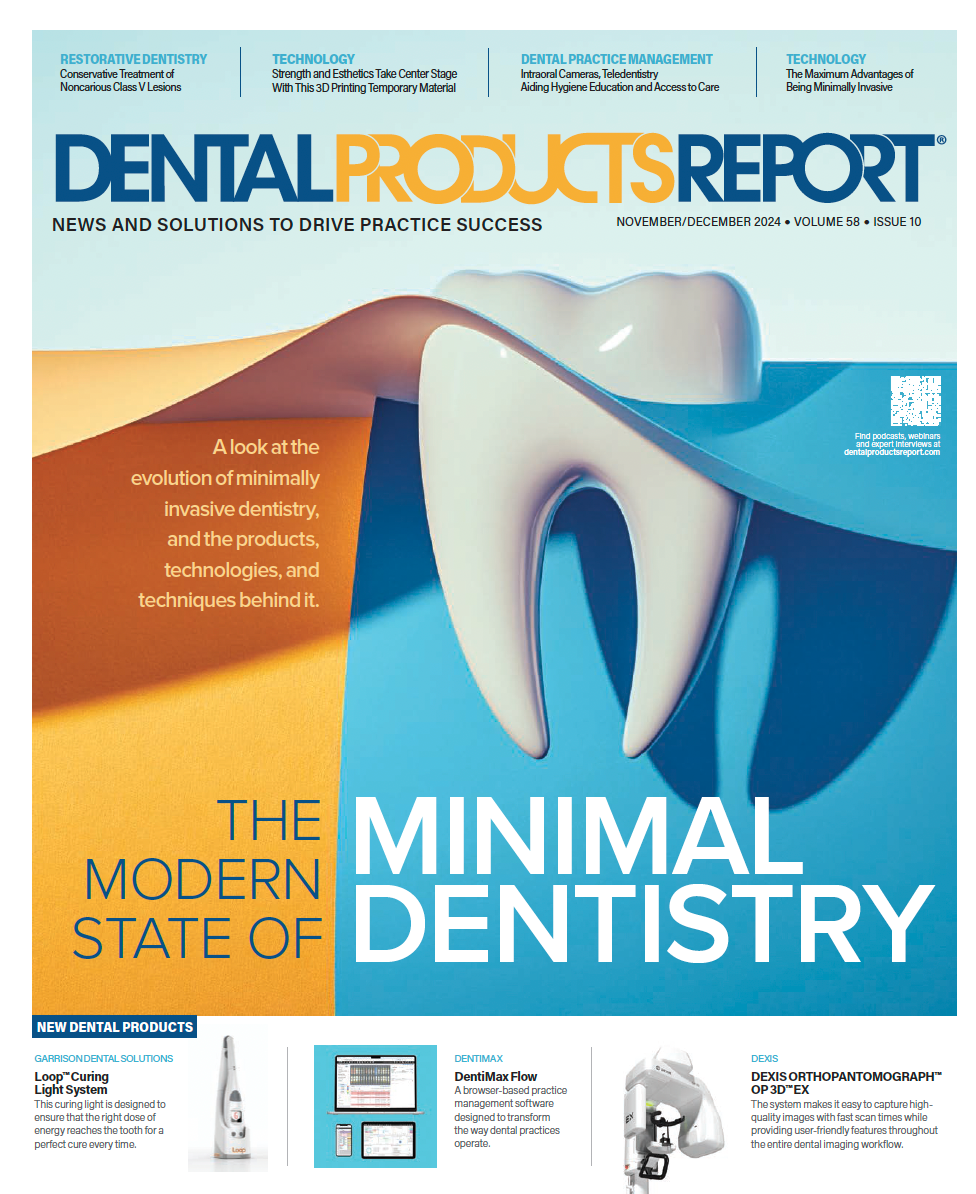While a provisional restoration is intended to be temporary, the waiting period can feel much longer and more uncomfortable than anticipated for patients undergoing extensive restorative procedures. The appearance, fit, and durability of temporaries play a significant role in a patient’s comfort and confidence during this time.
Fortunately, advancements in dental technology, particularly with the rise of 3D printing, have streamlined the production of temporaries. Companies such as VOCO America are at the forefront of this innovation, offering new materials designed not only for strength and durability but also for enhanced esthetics. These temporary materials, such as V-Print c&b temp, allow patients to maintain the smile and function they desire while they wait for their permanent restoration.
V-Print C&B Temp
VOCO’s V-Print c&b temp is a 3D print resin for creating highly esthetic long-term temporary restorations. The new material, like all V-Print resins, is sedimentation-free, eliminating the need for shaking or rolling before use, thus saving time for clinicians and lab technicians. With a flexural strength of 132 MPa, it is formulated to ensure durable and stable temporary restorations. Its high filler rate provides wear resistance, allowing crowns and bridges to last up to 12 months, offering patients long-lasting solutions. Additionally, V-Print c&b temp has low water absorption, making it resistant to discoloration and ensuring color stability. Its high-luster polish and natural fluorescence are designed to deliver the esthetic look of a final restoration and to meet high esthetic demands. Available in 6 shades (A1, A2, A3, A3.5, B1, and BL), V-Print c&b temp offers versatility and customization for dental professionals.
VOCO America, Inc
888-658-2584
vocoamerica.com
Pittsburgh-based clinician and cosmetic dentistry expert Susan McMahon, DMD, AAACD, FAGD, says that V-Print c&b temp from VOCO has set the trend for new and innovative restorative materials, particularly as her office has moved from analog to digital.
“I used to wax up all my cases in my back room by pouring up models,” Dr McMahon says. “Now we work a lot in the digital realm, and V-Print crown and bridge temporary materials made a huge difference in my practice.”
Long-Term Solutions for Short-Term Restorations
V-Print c&b temp harnesses a light-curing resin formulation that touts qualities such as its high abrasion resistance, low water absorption, natural fluorescence, and resistance to discoloration. These features, combined with it being sedimentation-free, makes V-Print c&b temp applicable in a variety of cases such as crowns, bridges, and mock-ups.
Dr McMahon cited its advantages over the old analog ways. “Within a very short period of time, we are able to print a temporary right out of my 3D printer that is already very close to where I want it to be, and it’s going to have absolutely precise margins,” she says. “I know that the embrasures will be open the way I want, so there’s almost zero finishing and polishing when it comes out of the printer.”
Another notable advantage of the V-Print c&b temp material is the way patients have adopted it, especially as more of them are seeking cosmetic dental work, according to Dr McMahon.
“One of the things that I find time and time again is when people are having cosmetic work done, and loads of people are asking for it these days, people want cosmetic work done on their teeth, but they hesitate. They’ll say 2 things—‘last time I had this done, the temporaries were so horrible I hated it. They looked horrendous, and they tasted awful.’
“What printing temporaries with a material like this crown and bridge temp from VOCO can do is you can confidently say to [patients], ‘You are going to have beautiful provisionals,’” she continues. “They’re going to look great. They’re not going to look like anything you had before, and it doesn’t [require] the skill [of] somebody who has been doing dentistry for 30 years because we have this digital help. We have the collective intelligence of the dental community that works with us now.”
One of the key advantages of digital dentistry is that it gives clinicians the confidence to print restorations effectively and efficiently, thanks to faster print times. According to Dr McMahon, the entire process of designing and printing a provisional restoration can take as little as 45 minutes, depending on the complexity of the design and the amount of components that need to be printed. By moving from analog to digital methods, clinicians can avoid the mess and inconvenience of pouring models and save valuable time in the process.
With the fit, durability, and efficiency of using V-Print c&b temp, VOCO has developed a temporary material that crafts provisionals that both patients and clinicians desire, with features such as its color stability, optimal margins, and more.
“I never, ever want to make provisionals the other way anymore. Once you make them like this, you just don’t ever want to go back because of all those benefits that we talked about,” Dr McMahon adds.
ABOUT - Susan McMahon, DMD, AAACD, FAGD
A dentist, author, lecturer, and instructor, Susan McMahon, DMD, AAACD, FAGD, is an expert in the fields of cosmetic dentistry, dental care, dental services, and teeth whitening. Dr McMahon is a past clinical instructor in prosthodontics and operative dentistry at her alma mater, the University of Pittsburgh School of Dental Medicine. She lectures around the world on cosmetic dentistry, minimal prep dentistry, dental technology, dental service, and teeth whitening.

